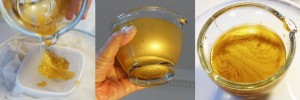Iron Genie at the Museum of the History of Science, Oxford
On Tuesday 8th July we installed my Iron Genie harmonograph at the Museum of the History of Science, Oxford. This interactive kinetic sculpture will be in the museum’s “Top Gallery” until the 21st. September as part of its ongoing “Art@MHS” programme. I shall officially be there to talk and demonstrate on Saturday the 19th July, the 16th August, and the 20th September. The rest of the time the machine will be operated by Ella Raff, a graduate specializing in the history and philosophy of science at Cambridge. Her magic way of engaging audiences with the machine was immediately apparent – here she is with a group of young people soon after we had finished setting it up. Follow the tweets at @MHSOxford or see the official museum blog.
I have written quite extensively about the harmonograph and the processes that went into the design and fabrication of Iron Genie in previous posts, and in my official website, where there are links to the most relevant posts.
I could not have hoped for a better venue in which to launch the Iron Genie. From concept and design to fabrication, it took some eighteen months to create, with the input of four senior technicians at Central Saint Martin’s, and a hefty weight of lovingly hand-crafted steel, brass and zinc. Having had a thorough polish over the previous weekend, this handsome Beast now sits in glory in the company of one of the world’s finest collections of historic scientific instruments. There are, for example, nearly two-hundred astrolabes, and if you cannot see the impressive display in person, you can visit the museum’s online exhibits and find out more about them. Even though I am not party to the mysteries of reading these fascinating devices, I am entranced by their sheer beauty and craftsmanship, and could not resist taking some close-up photographs:
I feel rather covetous of some of the drawing instruments, in particular this marvellous inlaid metal writing box with compasses and dividers:
And I would love to get my hands on this machine for drawing curves and ellipses:
 Reminiscent of the blackened steel fabrication of the Iron Genie, inspired as it was by the ‘over-engineered’ mechanics and aesthetics of the Industrial Revolution, are the many massive workings of tower clocks displayed at the museum. Here is one below – and I can’t wait to start experimenting with some fancy gears for my next project!
Reminiscent of the blackened steel fabrication of the Iron Genie, inspired as it was by the ‘over-engineered’ mechanics and aesthetics of the Industrial Revolution, are the many massive workings of tower clocks displayed at the museum. Here is one below – and I can’t wait to start experimenting with some fancy gears for my next project!
Postscript: Check out John Baez’s article about this, with mathematical analysis, on His Azimuth blog post ‘The Harmonograph’
Also Kalliope Monoyios on the Scientific Americal Blog Network ‘Can Machines Produce Art that Moves Us?’









 "Making Masterpieces for a Prince of the Black Sheep" – my Bodleian Fellowship research blog
"Making Masterpieces for a Prince of the Black Sheep" – my Bodleian Fellowship research blog "The Book of Gold" – Gold pigment tutorial available from my Etsy shop
"The Book of Gold" – Gold pigment tutorial available from my Etsy shop
Your Iron Genie is a fascinating (and beautiful) machine producing superb drawings, congratulations. I found your site from John Baez’s blog; unfortunately I am far away from Oxford to be able to go to see the live machine.
A little question, just out of curiosity; perhaps anyone knows. I have some glipmses of a scene in a movie where a working harmonograph appeared in a living room. At some moment, while the characters were engaged in conversation, the camera took a short sequence of an unfolding drawing, and I recall this as kind of mesmerizing. Unfortunately my recollection is rather nebulous and I am not sure neither on the film title nor any other identifying detail. The machine itself could be made with Meccano or something quite similar, but I am not sure either. I saw the movie in the mid-late 1970s, so the film cannot be posterior to these dates, and my guess is that the film was produced in England (just like your Iron Genie), so this reduces a bit the set of possibilities. Does anyone know? Perhaps this is only a little piece in a corner of the `harmonograph history’, but I hope this little detail could be interesting as well
LikeLike
I have been to the museum and have seen it last Friday. I find it amazing and really attractive.
LikeLike
Thankyou, I am glad you like it!
LikeLike
Very creative. Wanna share this blog FREESTYLE METAL ART – GLEN JONES for a sample of metal art coffee table
LikeLike
I really like your aesthetic Glen – and glad you appreciate mine.
LikeLike